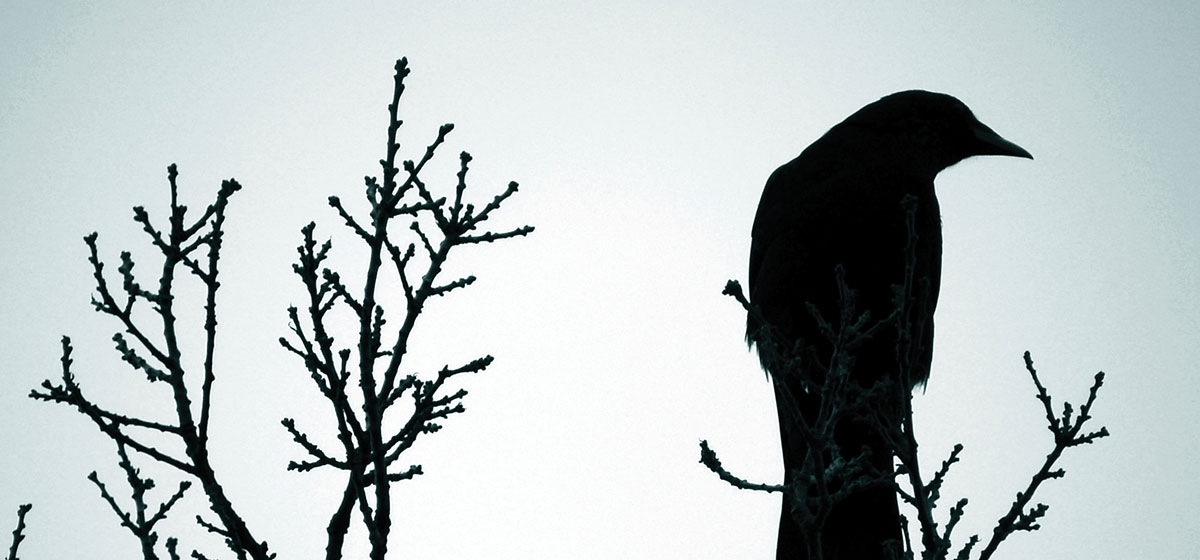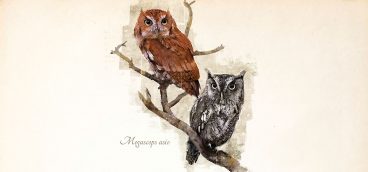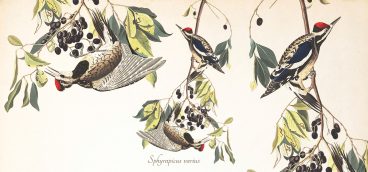
On winter afternoons, thin inky streaks flow across Pittsburgh skies. They follow invisible channels leading over leafless hillsides, empty schoolyards and ice-strewn rivers. They drift, break apart and reconstitute, often in the city’s East End in great airborne swirls. They are the crows of Pittsburgh.
Crows are common in myths, children’s stories and cartoons. Eating crow and scarecrow—whether in a colloquialism, fairy tale, or just out the window, we know the crow.
The American Crow (Corvus brachyrhynchos) masses in seasonal roosts numbering from 10,000 to 30,000 birds. They often come together in Homewood, the North Side or Lawrenceville. The roosts move from Washington Boulevard to the Allegheny Cemetery, from small neighborhood parks to hidden household gardens.
Technically, American Crows are songbirds, but no one would ever mistake their caws, croaks and gurgles for melody. Still, they produce notes and can even approximate human speech.
You may hear them en masse at dusk, or you may encounter a smaller group causing a ruckus on a bright winter day. They find safety in numbers, so when a couple of crows spot a predator, as they do with Pittsburgh’s Great Horned Owls and Red-Tailed Hawks, a signal goes out, and within minutes, hundreds of crows appear in a massive show of force to protect their threatened brethren. They make enough noise to wake the dead—perhaps explaining why a large group is called a murder of crows. Next time you hear them raising an avian din, follow their cawing to its source and look for the cause. More charismatic creatures may await.
Safety in numbers may be one reason for Pittsburgh’s large winter flocks. Another might be food. Scientists hypothesize that grouping in cold months allows crows to bring many eyes and ears to work on the season’s central problem: finding sustenance. Crows are omnivorous, dining on insects, plants, small animals, birds and carrion. With many crows scouting western Pennsylvania’s forests, fields, roadsides, and trash dumps, a murder of 10,000 can quickly cover vast swaths of territory. Hungry crows follow healthy, strong individuals to food sources, or perhaps audible or non-verbal cues point birds to the larder. Scientists aren’t sure, but watching crows fly on winter afternoons in such numbers hints that a system is at work.
And crows are systematic birds. In crow species worldwide, researchers have found distinct intelligence: tool making, using passing cars to crack nuts, and recognizing people and remembering them years later. Scientists confirmed this in a recent study, but amateur ornithologists recognized it more than 75 years ago. Before that, farmers and gardeners knew how smart and crafty crows were. Crows could always glean a meal from farm fields. Aside from the crops, crows would also eat agricultural pests. Farmers took less notice of that, though, and used poison, guns and dynamite to get rid of them. Yes, dynamite. Large murders were bombed to destroy birds and disrupt roosts. In the end, the crows survived these wars and a good thing, too. Crows eat enormous quantities of insects and grubs in the right seasons, maintaining a balance in nature that we just can’t duplicate.
Today few Pittsburghers are happy to host 10,000 crows for long, and dynamite isn’t an option. They may seem ominous or simply loud and messy, but as winter spectacles go, a visit by these birds provides an opportunity to observe agile fliers and curious feathered residents up close and in numbers. Think neither Hitchcock nor Poe (his was a raven). Consider instead our common American Crow. Caw! Caw!





